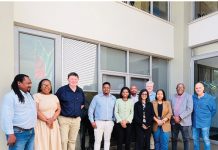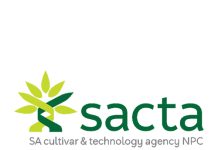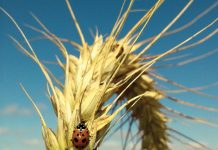Agriculture is a major sector in South Africa that also relies heavily on the exports of agricultural commodities. Yet, our producers keep facing increased challenges to feed the growing population, both directly in terms of local food production, but also in terms of running viable agricultural businesses for local job creation and economic stimulation of the continent’s relatively poor economy. It is therefore essential to get the sustainable growth agenda right in agriculture, while ensuring food security remains a priority.
A challenge, however, is that the discussions surrounding sustainable food production seem to be marred by polarised voices – and often those who shout the loudest are not necessarily the correct ones. This would be less of a problem if it were mere opinions. However, when it comes to food security that affects every single person on the planet, opinions based on emotion rather than science could do a lot of damage, especially if these opinions began to influence policies. Few industries have such fertile soil (pun intended) for issues to be taken out of context than the crop protection industry. Below are a few examples to illustrate this statement.
Toxicity
A frequently misunderstood concept is that of toxicity. It is often assumed that ‘natural’ products are safer than synthetic products, but as Paracelsus, the father of toxicology, stated: ‘All things are poison, and nothing is without poison; the dosage alone makes it so a thing is not a poison.’ This applies to all chemicals, including medicines, natural remedies, beauty products, household cleaning products and so forth. For example, paracetamol, which is sold over the counter at nearly any outlet in South Africa, has an acute mammal oral toxicity on par with some of the pyrethroids, which are used in many household insecticides. That does not mean it cannot be taken safely when the label instructions for dosage are followed. Many factors influence toxicity and a standalone hazard classification is not enough to determine the risk that a product could pose.
Residues
When it comes to pesticides, some people are concerned about the pesticide residue traces that may sometimes be found in or on certain foodstuffs. However, when placed in context again, these residues are negligible when a person understands the science behind how the allowable residues are calculated. In toxicology there are certain safety parameters for all substances, most important of which is the acceptable daily intake (ADI). Toxicologists do meticulous calculations of the substance’s toxicology, the food basket (meaning looking at the average food consumption of a person in a certain country) and the maximum residue limits (MRLs) of the substance – then they produce an ADI of the substance for human beings.
That figure is universally accepted as the daily dosage of a substance that a person may ingest without it having any health effects on the person. For example, if the ADI of glyphosate is between 1 and 2 mg/kg body mass per day, it means an 80-kg adult can safely consume 80 to 160 mg glyphosate per day without any adverse effects. It is alleged that bread in South Africa contains 2 to 4 mg glyphosate per loaf. Therefore, a person would need to eat 20 to 40 loaves of bread per day before the trace amounts of glyphosate might have any impact.
Linked to the ADI is the MRL (as mentioned above), which is the upper limit of a pesticide concentration in consumable material that poses no appreciable risk to the sensitive individuals in a population. MRLs are a trading standard used to ensure that food is safe for human consumption and to facilitate international trade. Each country (and sometimes even retailers) specifies its own MRLs based on the typical food basket of the country. Note that MRLs are usually set well below the levels which would pose consumer safety concerns, with additional safety parameters included when calculating the acceptable limits.
Regulation of pesticides
Before an agricultural remedy, which includes pheromone traps, mating disruption devices, biological products (basically any product that makes a claim of control, destruction, repelling, attracting or prevention of a pest), can be registered in South Africa, a dossier needs to be compiled along with the application and submitted to the Registrar of Act No. 36 of 1947. This dossier includes an immense amount of data, including efficacy data, residue data, phytotoxicity and yield data as well as in-depth information about the active ingredient (identity, purity within specifications, declaration of impurities, toxicology, environmental impact, manufacturing process, etc.) and formulation (full disclosure of active ingredient content and co-formulants, physical and chemical properties, storage stability, toxicity, etc.), to name a few.
In other words, products cannot just be ‘dumped’ in South Africa as some activists claim. They must go through a rigorous registration process that considers the local production conditions and environmental impact. A registered product will be accompanied by a product label and safety data sheet (SDS) that, as from September 2023, must comply with the Globally Harmonized System of Classification and Labelling (GHS). The product label is a legal document that gets approved under Act No. 36 of 1947 and reflects the claims for which the registration data have been submitted.
Note that it is illegal to apply any crop protection product contrary to the product label instructions as per Regulation No. R1716 of 26 July 1991, which includes wearing of appropriate personal protective equipment (PPE), pollinator safety instructions, pre-harvest intervals and so forth. If the product label instructions are followed, the risk to the user is mitigated and the product, no matter how hazardous, can be applied safely.
Substances of concern
The definition of a substance of concern according to draft regulations that were circulated to industry, refers to any substance that has an inherent capacity to cause an adverse effect on humans, animals or the environment and is present or is produced in a plant protection product in sufficient concentration to present risks of such an effect. These substances are classified by their intrinsic hazardous properties according to the GHS mentioned earlier, which was implemented through the Hazardous Substances Act by the Department of Labour.
On 14 April 2022, the Registrar of Act No. 36 of 1947 sent out a notification to industry of his intention to phase out active ingredients and their formulations that meet the criteria of CMR 1A and 1B of the GHS by June 2024. CMR category 1A refers to active ingredients and/or co-formulants that meet the criteria of a known human carcinogen, mutagen or reproductive toxin, largely based on human evidence. Category 1B refers to a presumed human carcinogen, mutagen or reproductive toxin, largely based on animal studies. It must be emphasised that these classifications refer to the intrinsic hazardous properties of the product and not the risk. But can we rely on a hazard classification to guide us on risks?
If we apply the same logic to all substances, then we will need to ban most oral contraceptives as well, because oestrogen is classified as a category 1B reproductive toxin and carcinogen. Vitamin A is a 1B reproductive toxin, and so is tea tree oil. Note that the latter two products are not regulated, unlike pesticides, and often make claims of being ‘non-toxic’ and safe. In addition, these are substances that we intentionally ingest or apply to our skin, and not, as in the case with pesticides, a product where the risks of contact are largely mitigated through appropriate safety measures.
This is why context matters and, as will be illustrated further in this document, it can pose a risk to South African agriculture and food production if policies that are being implemented do not take the context into account.
Risks to South African agriculture
The EU Green Deal
The European Union Green Deal (EUGD) has been dominating several discussions in the agricultural community since its presentation in 2020, mostly because its objectives, although commendable, are considered by many to be unattainable in practical terms and are somewhat arbitrary. In addition, the knock-on effect of some of the proposed policies could have a severely negative impact on agriculture and trade in developing countries, who are most at risk when it comes to food security and socio-economic impacts. There are two strategies of concern for the agricultural sector in South Africa. The first is the Farm to Fork (F2F) strategy and the second is the Chemical Strategy for Sustainability.
 F2F strategy
F2F strategy
Some of the key aims of the F2F strategy are to make 25% of EU agriculture organic, reduce the use of pesticides by 50%, reduce the use of fertilisers by 20% and to reduce the use of antimicrobials in agriculture by 50% by 2030. The EU’s objective is to support the global transition to sustainable agri-food systems, which in itself is not a problem. However, the way in which this is being executed will pose significant risks for South African agriculture.
One such risk is the so-called ‘mirror clause’ that was introduced as a form of reciprocity with the aim of creating a level playing field for EU producers. In other words, any constraints on EU producers must be equally applied to producers in countries from where agricultural produce is imported into the EU, while also encouraging sustainable food production methods in other parts of the world. However, this level playing field is not level at all, because EU producers are heavily subsidised with an approximate €387 billion committed for this purpose.
These mirror clauses will mean that producers exporting to the EU will no longer be able to use some of the tools available to them, even if it is registered in South Africa, due to those import tolerances (allowable residues of pesticides) likely being revoked. Clearly, South Africa has a different climate to much of the EU, different crops that are not produced in the EU and our producers must fight pests that are not present in the EU. This will also have an impact on integrated pest management and managing resistance. In the citrus industry, for instance, the loss of certain products will have severe phytosanitary implications, such as for citrus black spot (CBS). Because there aren’t many options for control of CBS, the overuse of other products will lead to resistance development. Citrus is just an example, but this will be a challenge for many crops in South Africa.
Chemical Strategy for Sustainability
The proposal for this strategy is to set up a ban on the production and export of substances that are not approved in the EU under the guise of protecting third world countries. However, it completely disregards the various agronomic needs of these regions and can lead to serious difficulties in sourcing high-quality products, as well as leading to a shortage of essential solutions to control key pests. The proposal is open for public consultation at present.
In the grain industry, one of the biggest concerns is the ability of South African producers to remain competitive. The loss of certain products will inevitably have a further impact on input costs, an additional pressure on an already very slim profit margin. To put this into perspective: If South African producers were unable to produce yellow maize profitably and we had to import the same volume from the United States, it would cost us R44 billion more. Yellow maize is not only used for human consumption but also for animal feed, so one can imagine the cost implications on the average South African food basket. Bear in mind that this is not the only crop that will be affected by these policies. The risks are not just to food security and affordability – if South African producers are not able to remain competitive, job losses will be inevitable.
The regulatory situation in South Africa
South Africa’s regulatory framework for agricultural remedies is a robust one, but a major challenge facing the crop protection industry is the time it takes to get a new remedy registered. This is due to a combination of reasons and industry is working with government to address these. But at present, there is still an immense backlog of product registrations, meaning new technologies are not entering the market as fast as they should. This means South African producers have a void in their crop protection toolbox that is exacerbated by the abovementioned policies, because we are running out of suitable active ingredients faster than they are being replaced.
What can we do about the situation?
First and foremost, this matter needs to receive the necessary attention from everyone involved in food production, because food security affects everyone. If the external factors that might challenge this are ignored, then South Africa’s ability to produce enough food for its people is at risk.
We also need to ensure that South Africa’s regulatory environment enables the latest technologies and innovations to be brought to market so that producers can continue to improve on their production practices. If producers are not allowed the necessary tools to protect their crops or have access to trade their goods in the EU, the snowball effect on the industry will be severe, including job losses and disinvestment, to name a few.
It must be emphasised that the sustainability agenda is one that must be pursued globally. However, policies are not one-size-fits-all, and the policies tailored to EU realities do not match the realities of South African producers. Therefore, regulators should strive to ensure that any change in the regulatory environment makes sense for the South African agricultural landscape and is based on sound science as opposed to pressure from abroad that is often based on emotion.
References
Workshop presentations: Working towards sustainable food production in South Africa (9 to 11 May 2023):
- Rod Bell (chief executive officer – CropLife South Africa)
- Dr Alan Hardacre (consultant – CropLife Africa Middle East)
- Margaux Rundstadler (director: Public Affairs and Communications – CropLife Africa Middle East)
- Roleen la Grange (regulatory manager – CropLife South Africa)
- Chana-Lee White (Agri-Intel manager – CropLife South Africa)
- Dr Gerhard Verdoorn (operations and stewardship manager – CropLife South Africa)
- Corné Louw (Applied Economics & Member Services lead – Grain SA)
- Paul Hardman (industry affairs manager – Citrus Growers Association)
- Dr Schalk Schoeman (research extension manager – SAMAC)

















